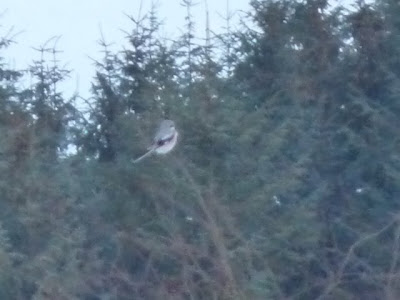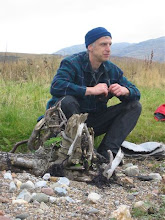





The recent weather has meant that we had to have a close look at the pine seedling cutting work parties that we had planned to see if they could be carried out. The snow is so deep that it was proving to get the equipment required for the weekend work party out of our workshop so reluctantly and for the first time we have cancelled the public work party. We also had planned a work party for SNH Stirling office collegues and we decided that they were tough enough to have a go. So yesterday we piled into landrover and headed down a snow filled track laiden with bowsaws and loppers to attack the invading pine seedlings. After a bit of a struggle to turn round the vehicles we marched down to the bonfire spot through deep snow. A few wellies came off but we got there relatively intact. The temperature must have been around freezing which seemed tropical after the brutal freeze a day ago. The team set to work, most people headed off to cut pines while 2 expert firestarters got going with the fire. The best pines were cut and put to one side for Christmas trees and then we set to work clearing in the end an area of nearly 1 ha of pine seedlings. All the Christmas trees had to be dragged off site through deep snow which meant that hypothermia was never an option. After lunch (which took seconds to devour)the team set to clearing and buring up a lot of willow and gorse left over from a previous work party. At the end of that it just left the slog back dragging trees to the landrovers as the sun dropped below the horizon with again one or two wellies stuck. A good days work done and a bit of money raised for Oxfam as the trees taken back to the office were sold to colleagues not brave enough to venture.
And the shrike - well the most exciting thing of all was on the way back up the track we spotted a strange looking grey, black and white bird sitting on top of a tree. Slammed brakes and a grab for the camera and it proved to be a great grey shrike. These birds breed in far north Europe and generally only pass through the UK in low numbers in spring or autumn. But a few few (on average only 7 a year) decide to spend the winter here in Scotland and this was evidently one of those. A very special bird - apologies for the very poor photo at the top of the posting.


























